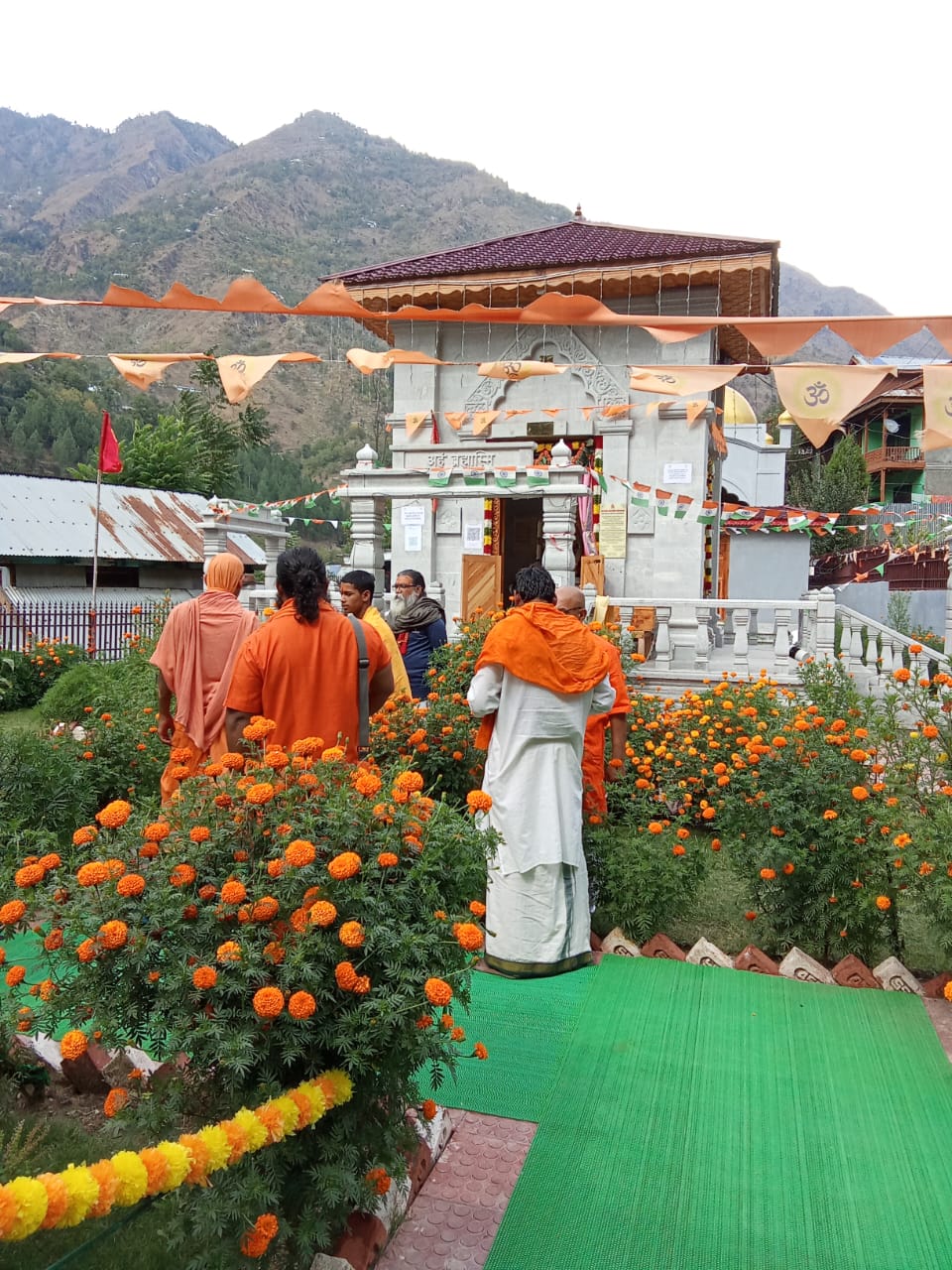Srinagar. For the first time since Bharat became independent, Navratri has been celebrated at the ancient Sharda Mata Mandir, located in Kashmir’s Teetwal. The incident has scripted history and was taken note of by Union Home Minister Amit Shah.
In a social media post on X, the Union Home Minister said, “It is a matter of profound spiritual significance that for the first time since 1947, the Navratri pujas have been held in the historic Sharda Temple in Kashmir this year. Earlier in the year the Chaitra Navratri Puja was observed and now the mantras of the Shardiya Navratri puja resound in the shrine. I was fortunate to reopen the temple on 23rd March 2023 after restoration”.
He said that this not only signifies the return of peace in the valley but also marks the rekindling of our nation’s spiritual and cultural flame under the leadership of Prime Minister.
The Bharat-Pakistan war of 1947-48 and the attack of the Pashtu-Kabila on the temple, shut the access to the temple. It is noted that, after war, Hindu saint Swami Nandlalji tried to bring back the idols to Bharat, from the temple that eventually became part of Pakistan occupied Kashmir. However, he was able to archive very few of them at the historic site of Devibal in Baramulla. Besides, Hindus completely lost their access to the temple as Pakistan government took control of it.
The historic significance of the temple university to not only Hindus and Bharat but to the ancient cultures and civilizations that existed during the crucial years of humanity in ancient times, mark the 2023 Navratri celebrations at Sharda Peeth as HISTORIC.
SIGNIFICANCE
According to the book ‘Thematizations of the Goddesses in South Asian Cinema’ that, studies and analyses the 2017 documentary on the Sharda Peeth, the temple is considered to be the oldest among 18 Maha Shakti Peethas. It is believed to be built on the same place where the right hand of Sati fell. The Sharda Peeth is significant as a Hindu and Buddhist temple university as it housed several students from many countries, including Tibet, China, Thailand, Nepal, Bhutan, Indonesia, Myanmar, Iran, Afghanistan and Cambodia. The book mentions that the temple university is credited for the popularization of the ancient Sharda script, that was named after ‘Sharda Devi’, the deity of the temple.
The documentary that has been studied in the book mentions that renowned scholar from varied periods have visited the Peeth. Hiuen Tsang, Adi Shankara, Bilhana and Kalhana are the big names particularly mentioned. The Chinese Buddhist monk visited Sharda Peeth in 632 AD and stayed there for 2 years. The vizier of the Mughal king Akbar, Abul Fazl, noted that a mystical effect can be experienced at the Peeth, on very eighth day (Ashtami) of the month.
The 14th century literary and cultural text ‘Madhaviya Shankaravijayam’ refers to the great 8th century Vedic scholar, Adi Shankaracharya, who is believed to have established the university within the temple premises. The 11th century Kashmiri poet Bilhana details the ornaments of the Devi and compares the luster of her beauty with the magnificence of river Ganga. Besides, the famous 12th century Kashmiri Historian Kalhana’s seminal work ‘Rajatarangini’ certifies the exact location of the temple.
#Navratri2023 #Blessings
Embracing the divine on the first day of #Navratra at the holy Sharda Mata Mandir Teetwal Kupwara .Devotees gather in huge numbers to seek the blessings of Mata with enthusiasm.@PMOIndia@HMOIndia@OfficeOfLGJandK@MinOfCultureGoI@PIB_India… pic.twitter.com/aEQTIBPMig
— Information & PR, J&K (@diprjk) October 15, 2023



